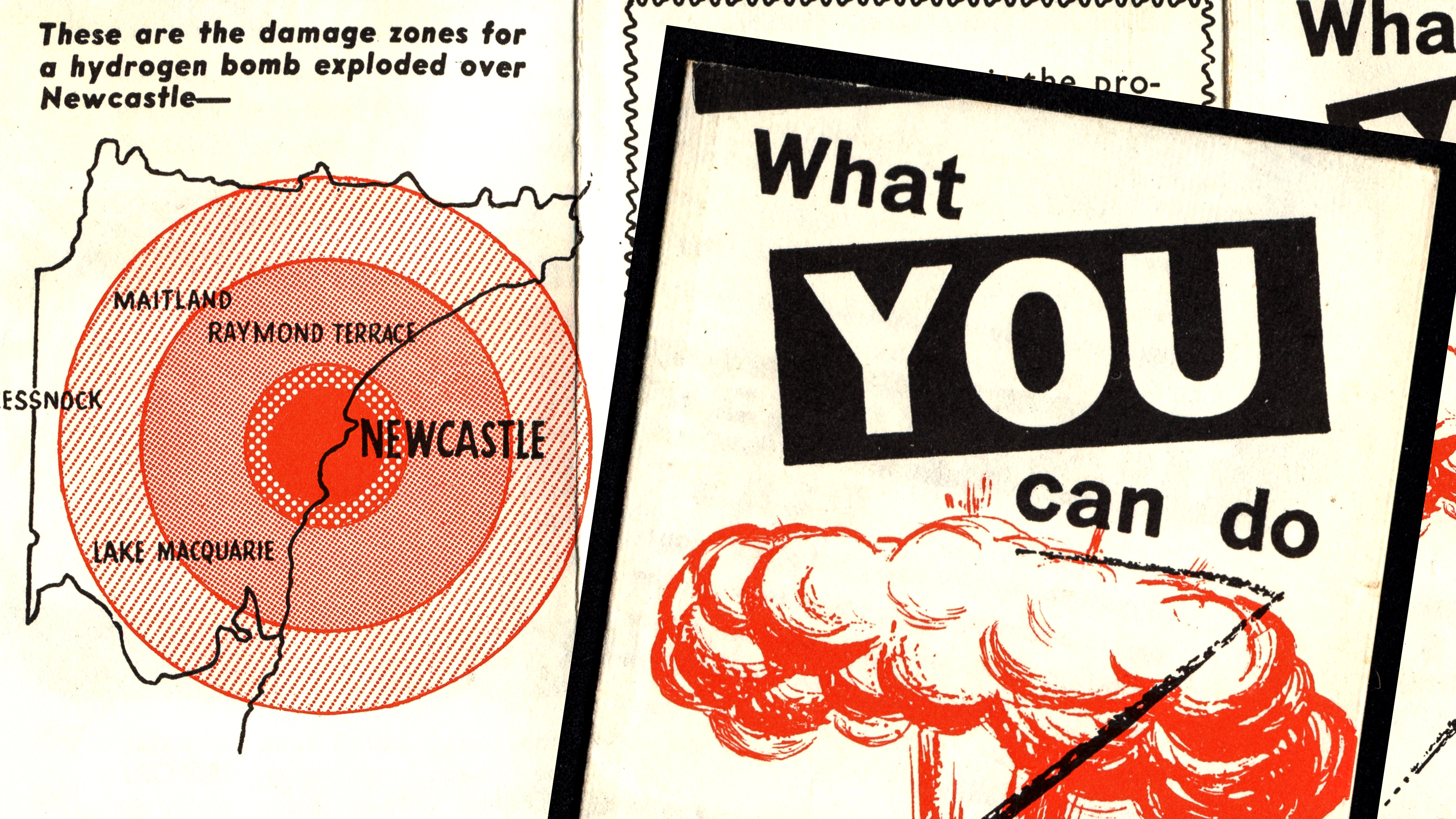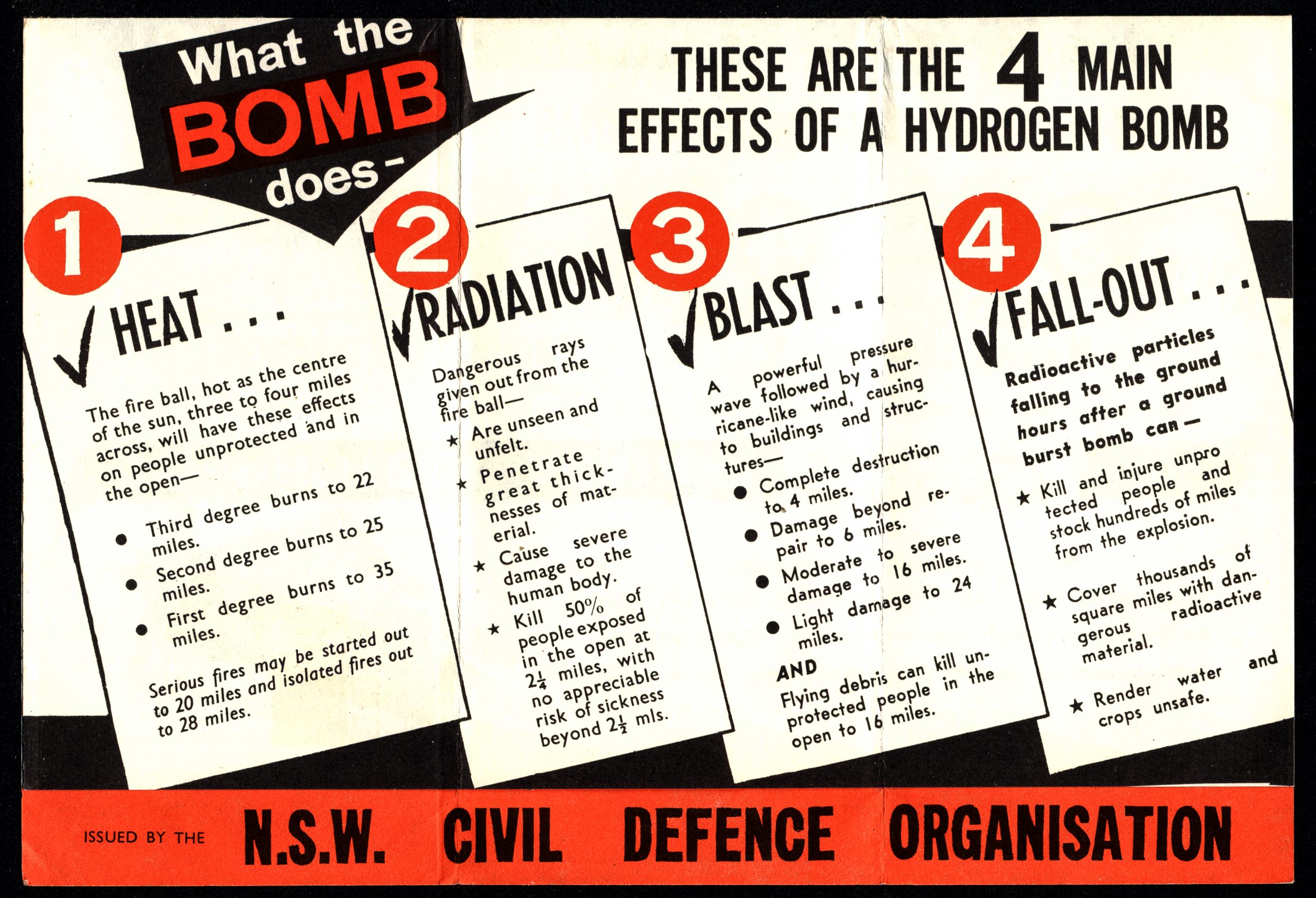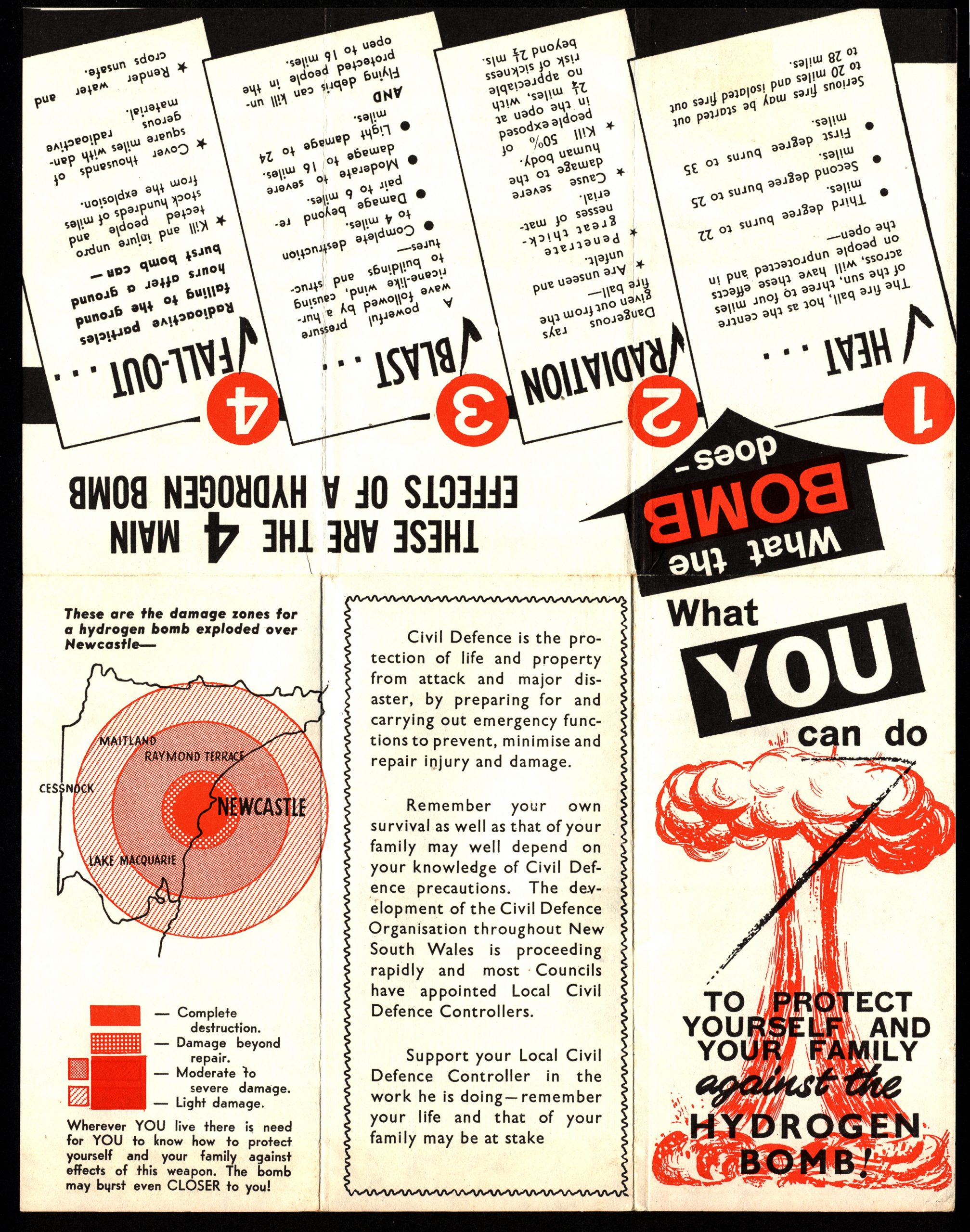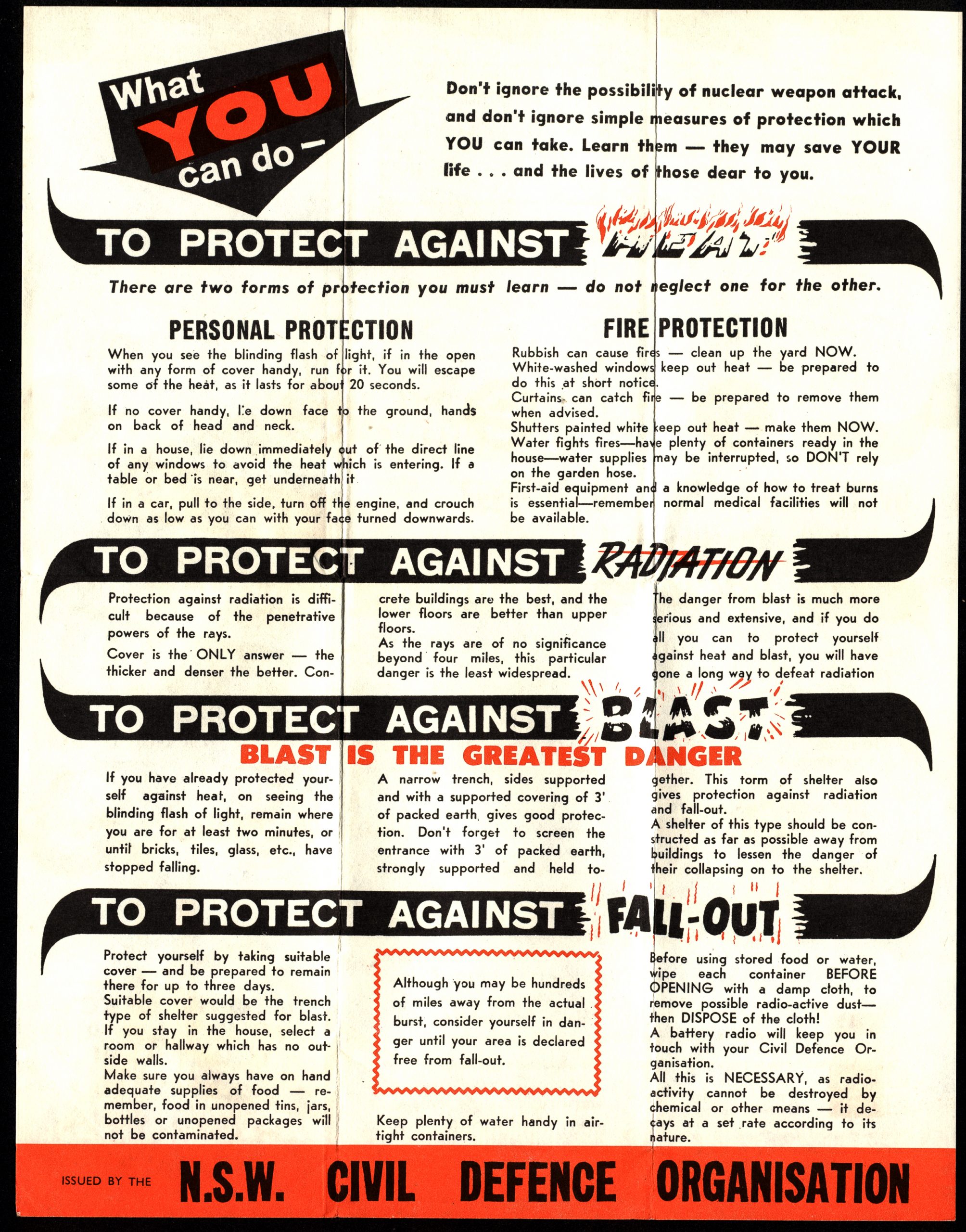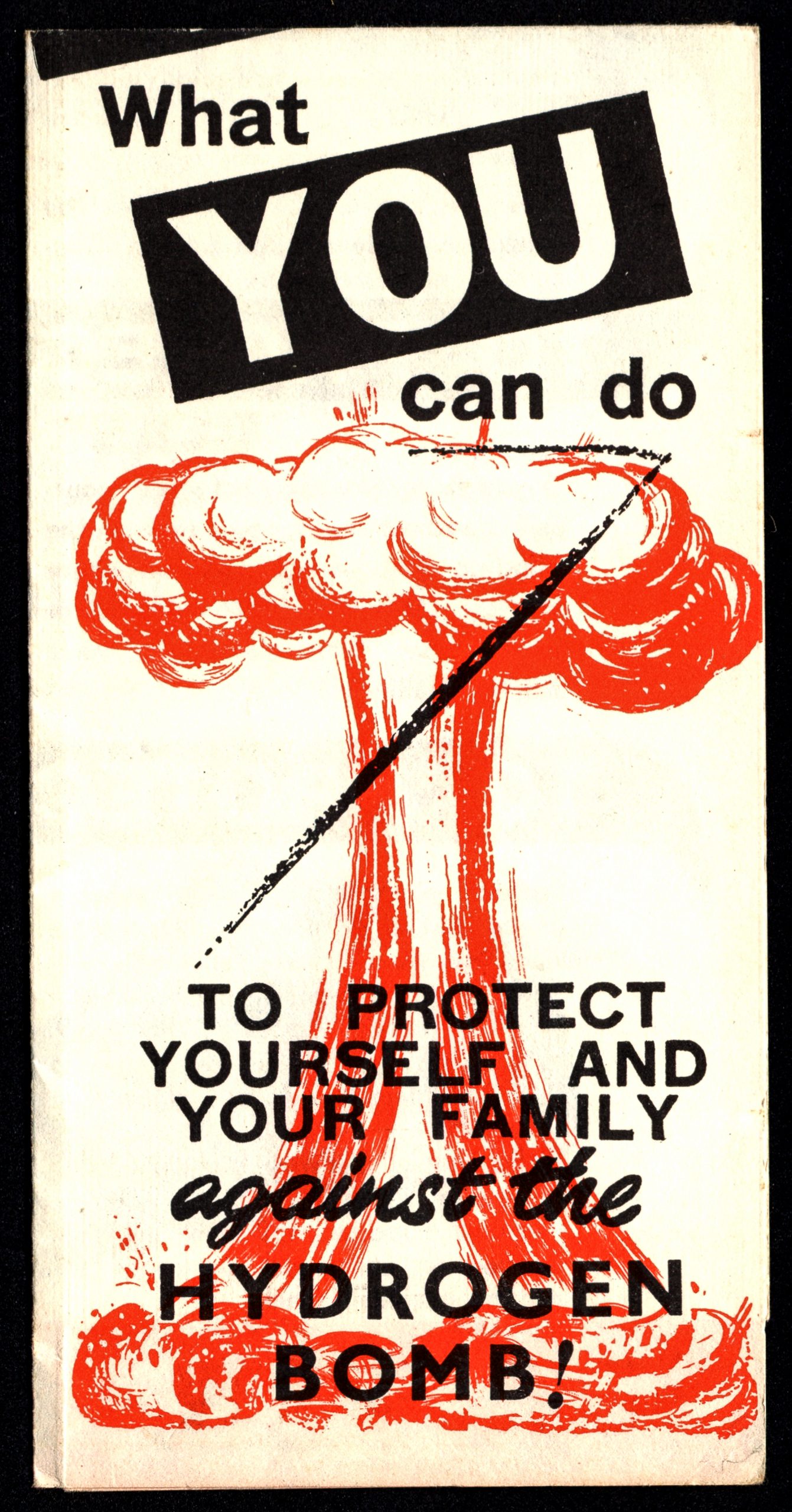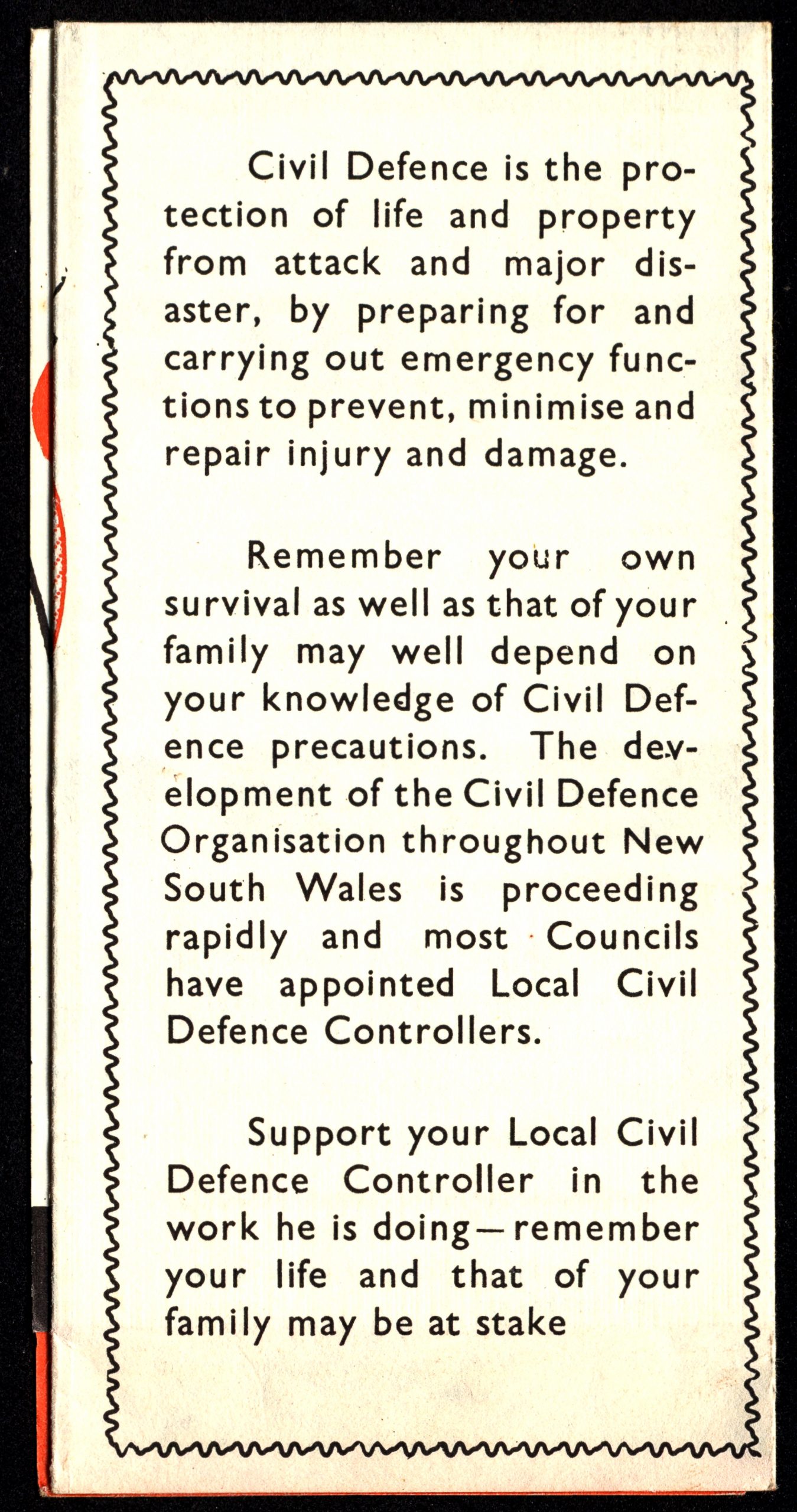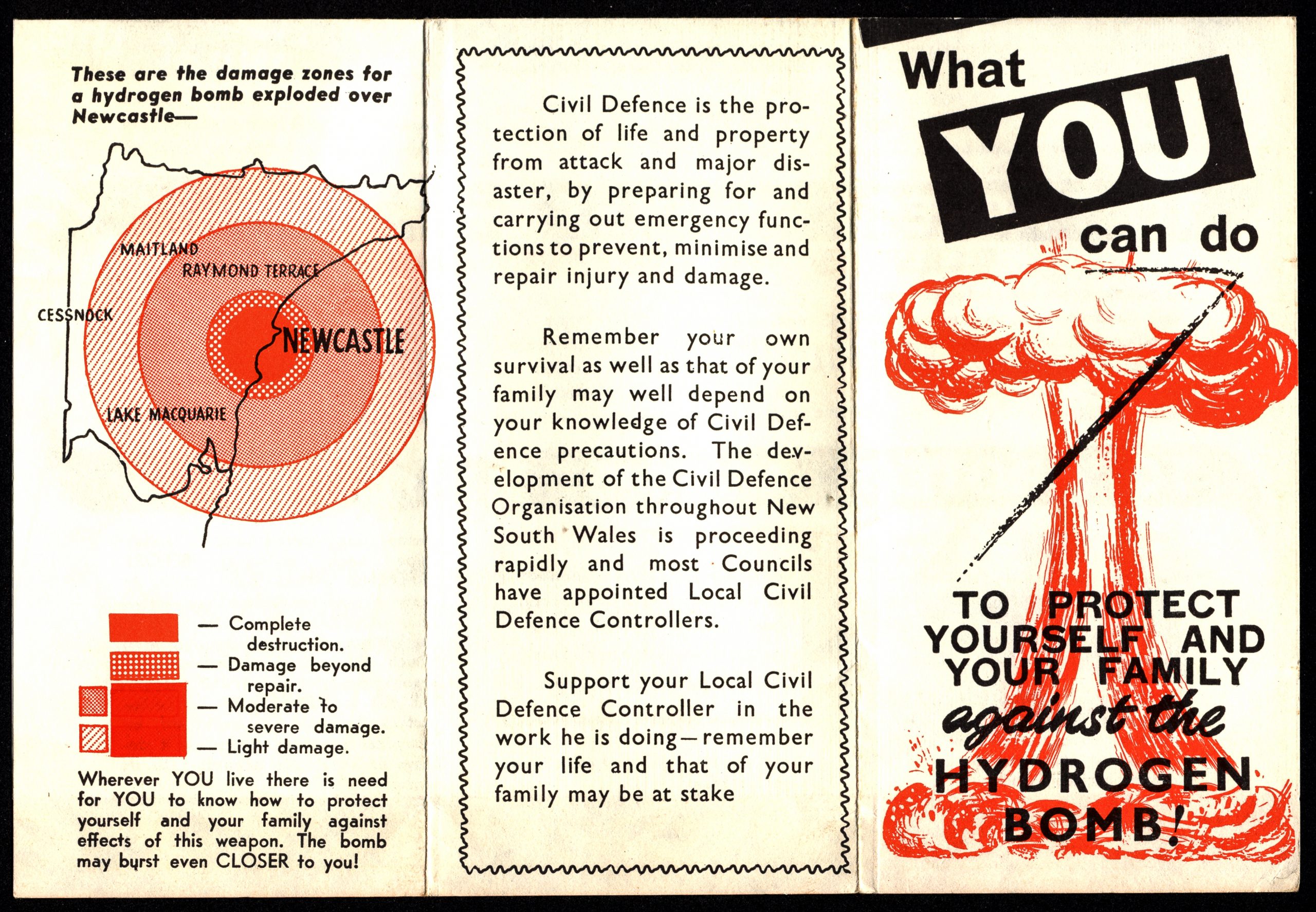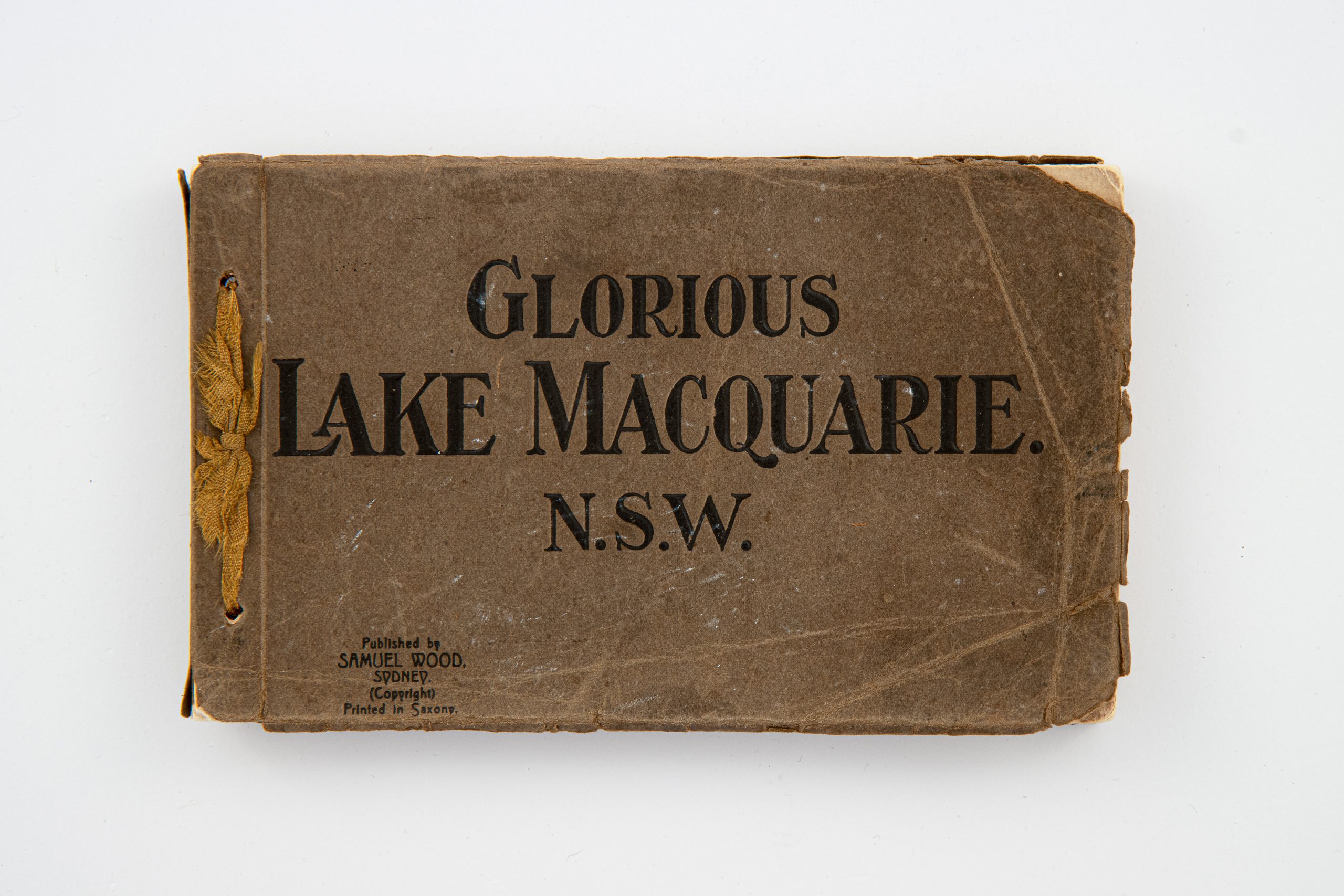Ground Zero
Worst Case Scenario in Greater Newcastle
One glimpse at the map illustrated on this pamphlet would suggest that if a hydrogen bomb were to be dropped on Newcastle, the effects would extend beyond Maitland, Cessnock and Lake Macquarie, making the chances of survival slim. Luckily for the citizens of the Greater Newcastle area, the Cold War era local civil defence organisations took their work very seriously!
While there had been an Executive Committee for civil defence in New South Wales since at least 1935, it was not until February 1939 that a Department of National Emergency Services was established. This sought to provide for wardens, first aid, decontamination, rescues, repairs, liaison with essential services and emergency communication, as well as committees for technical advice, including shelters, demolition and rescue, warnings, and unexploded bombs.
With the close of World War Two, these services came into full force, making it something of a precursor to the current State Emergency Services in its operation. Several years after the end of the war, there was growing concerns about the possibility of Australia being dragged into another conflict. This time, a war led by the United States on one side and the Soviet Union on the other, with their ever-increasing commitments to the development of the newest and most lethal thermonuclear weaponry.
While the threat of Newcastle becoming the target of the Soviet Union’s new and dangerous toy was low, the local civil defence organisations worked tirelessly to provide their public with ample information about how to prepare for the event and aftermath of a nuclear attack.


